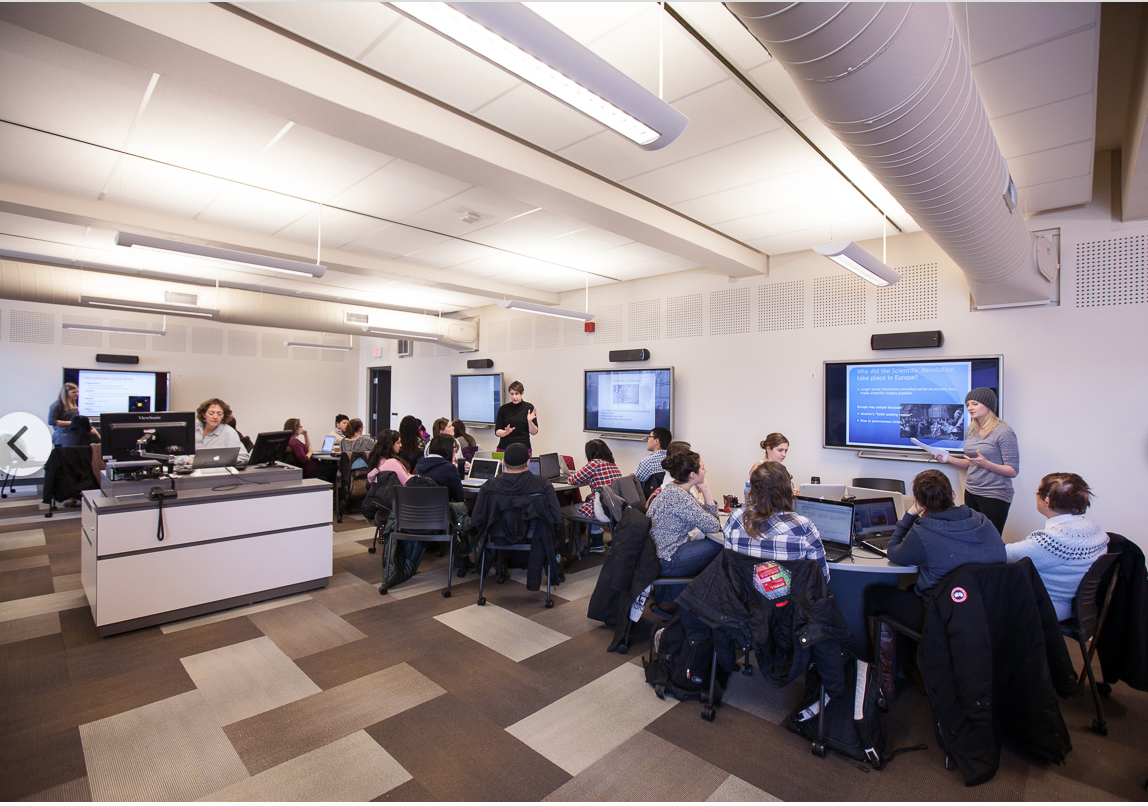
It’s that time of the year to look back and consider the good and the bad of 2022, but first a couple of provisos.
This was a year when I actually started to take it easy work wise and concentrated on my golf handicap. This means I haven’t been as engaged with Canadian post-secondary education as in previous years, and it’s easy for one’s fingers to slip off the pulse. Easing up was necessary though following the two previous, crazily hectic, years during the pandemic. Like many others, I have never worked so hard in all my life as I did in 2020 and 2021.
Nevertheless, you will see from my next post that I was still reasonably busy. I will focus on my personal activities in the next post. In this one I want to look at the major trends and events in online and distance learning during 2022.
Back to a new normal
Most institutions, at least here in Canada, have moved back to normal functioning, with most teaching taking place on campus. For many students (but fewer instructors) this is a huge relief., especially those in first year courses. For most of these students, going to university or even community college is much more than just academic courses. This is the time of life when young people need to extend their network of friends and broaden their cultural experiences. In particular, living away from home is an important developmental experience. The pandemic clearly showed how important these aspects of higher education are for many students.
At the same time, things are not exactly the same as they were before. There has been a greater acceptance by instructors and students of the potential of online learning, and these experiences have been and are being integrated more into regular teaching and learning. Surveys by the Canadian Digital Learning Research Association and WCET in the USA (e.g ., Johnson et al., 2022) have found that after many years of generally negative feelings in instructors towards online learning, this shifted during the pandemic, almost certainly due to more instructors having actual experience in online teaching.
Some institutions, such as the University of Manchester in the UK, have started questioning the value of largely inactive large lecture classes, and have moved some of these online or re-designed the teaching. Programs serving those who are working or have long commutes, such as the School of Continuing Education at Toronto Metropolitan University (formerly Ryerson, another change in 2022), have moved all their classes online, following a poll of their students.
I don’t agree with those who believe that the pandemic will result in huge, permanent changes to post-secondary education, but the future will still be more different than the past, as a result. Change is happening, but in a manageable and largely non-disruptive way.
The future is hybrid
Perhaps the most important change going forward is the integration of online learning with on-campus teaching. Students have been doing this for some time, going online to find alternative sources, especially when their on-campus lectures are not clear, confusing or just plain boring. Most commercial textbooks now come with extensive online support materials. (This is a challenge for online, open textbooks, which need to integrate activities and other resources, and instructors need to be aware of these online text-book related activities and support students in using them if possible).
More worryingly, students are increasingly turning to commercial online tutors and commercial online assessments. AI is increasingly being used to provide answers to assessment questions. However, it is no use instructors wringing their hands over these more negative developments. The challenge is to develop authentic online work that makes these commercial products irrelevant. This is best done by personalising the teaching as much as possible, and avoiding standardised questions.
On balance, hybrid learning is a good thing. Quite apart from the fact that students tend to learn better in a hybrid environment (Means et al., 2011), it prepares them for the future of work, which too is increasingly becoming hybrid. More importantly, it opens up the possibility of making teaching more effective, as we come to learn the relative strengths and weaknesses of in-person and online learning (when both are available to students), by focusing on their relative affordances. The challenge now is not online learning, but making the campus experience of teaching worth the bus trip or car commute. 2022 was the year hybrid learning became more generally recognised as an important direction for post-secondary teaching and learning.
Events, dear boy
The British Prime Minister, Harold Macmillan, was once asked by a TV interviewer what he feared most when he went into work each day. ‘Events, dear boy, events.’ Things that come out of right field that were never expected. Covid is a good example.
There were two significant events for Canadian post-secondary education in 2022, both of which have wider implications than for the actual institutions involved.
1. The Insolvency of Laurentian University
The attempt by Laurentian University to seek protection from bankruptcy has been well covered by Alex Usher. Apart from Laurentian’s financial management being a disaster of university governance, there are broader implications for the Canadian post-secondary sector. Although there are exceptional circumstances surrounding Laurentian’s financial troubles, it is not the only publicly-funded Canadian post-secondary institution that will be in financial risk over the coming years. There are some important lessons regarding online and distance learning resulting from the Laurentian experience.
One of the major causes of trouble for Laurentian was an overly ambitious capital program focused on buildings. It borrowed more than it could afford to repay in order to expand its physical facilities. Despite the heavy investment, this failed to attract more students, especially international students, who would have provided the additional funding.
Demographics are going to be important in the future. We have probably peaked in terms of using on-campus international students to subsidise Canadian students. Increased enrolments are more likely to come from those already in the Canadian workforce, needing upgrading or retraining, than from those coming through high school. Furthermore the move to hybrid learning is likely to – and should – lead to decreasing demand for traditional classroom spaces (particularly large lecture theatres.) There needs to be a shift in future from investment in physical capacity to more training and investment in hybrid and online learning. In particular the potential for online programs delivered into foreign countries needs to be explored.
2. Athabasca University’s attempt to become a virtual institution
Alberta: where silly ideas go to die. Capped only by Danielle Smith’s Sovereignty Act, the attempt by the Alberta government to stop Athabasca University from allowing its staff to work virtually was imbecilic:
- trying to force 500 people to move to a town of 2,000 inhabitants with an average occupancy rate of 50 homes per year;
- telling people where they must live in order to work (probably against the law in Canada);
- replacing the Board with ‘compliant’ members to force the change through;
- threatening to with-hold all its annual grant to the university;
- what Professor Glen Jones of the University of Toronto called ‘the most egregious political interference in a public university in Canada in more than 100 years.’
Yes, the university administration could have handled better its relation with the town, and should have thought more carefully about what jobs would be better located on its campus, but a largely digital university is bound to have a large proportion of staff working virtually.
What about conventional universities, though? What about staff who do not want the commute to campus but would rather teach online? This raises the tricky question: who should be responsible for deciding whether a course should go online, and what criteria should be used? In my view, the needs of the students should be paramount, not the wishes of the instructors. Here is a potential conflict of interest between academic freedom and the needs of students. I’ll be looking for how this plays out in the future.
Events, dear boy, events.
The equity issue with online learning
Covid-19 brought home clearly that even in a relatively wealthy country such as Canada, not all students have equal access to online learning. In Canada, about 10-15% of the population do not have adequate internet access for study purposes, and another 10% cannot afford the equipment. I was impressed then to learn that in South Africa, one university paid the equivalent of US$5 million to provide free wi-fi access to all its students during the pandemic.
I was also very pleased to hear this week that the Ontario government has awarded a grant of $4.7 million to Contact North | Contact Nord, giving learners in underserved communities flexible access to innovative virtual learning and training opportunities. This investment supports 13 online learning centres equipped with Extended Reality (XR) technology, and a laptop and internet loaner program. We need more initiatives of this kind to deal with unequal access.
Overall, a good year
In my view, 2022 was much better than the awful years of 2020 and 2021. Despite heroic attempts by instructors, administrators and students, the impact of the pandemic was a severe blow to post-secondary education. 2022 was a recovery year with some interesting developments.
So I wish you all a wonderful holiday season, and a great 2023: enjoy!
Reference
Johnson, N., Veletsianos, G., Belikov, O., & VanLeeuwen, C. (2022). Faculty perceptions of online education and technology use over time: A secondary analysis of the annual survey of faculty attitudes on technology from 2013 to 2019. Online Learning, 26(3), 293-310. https://olj.onlinelearningconsortium.org/index.php/olj/article/view/2824/1203
Means, B. et al. (2011) Evaluation of Evidence-Based Practices in Online Learning: A Meta-Analysis and Review of Online Learning Studies Washington, DC: US Department of Education









 Dr. Tony Bates is the author of eleven books in the field of online learning and distance education. He has provided consulting services specializing in training in the planning and management of online learning and distance education, working with over 40 organizations in 25 countries. Tony is a Research Associate with Contact North | Contact Nord, Ontario’s Distance Education & Training Network.
Dr. Tony Bates is the author of eleven books in the field of online learning and distance education. He has provided consulting services specializing in training in the planning and management of online learning and distance education, working with over 40 organizations in 25 countries. Tony is a Research Associate with Contact North | Contact Nord, Ontario’s Distance Education & Training Network.

